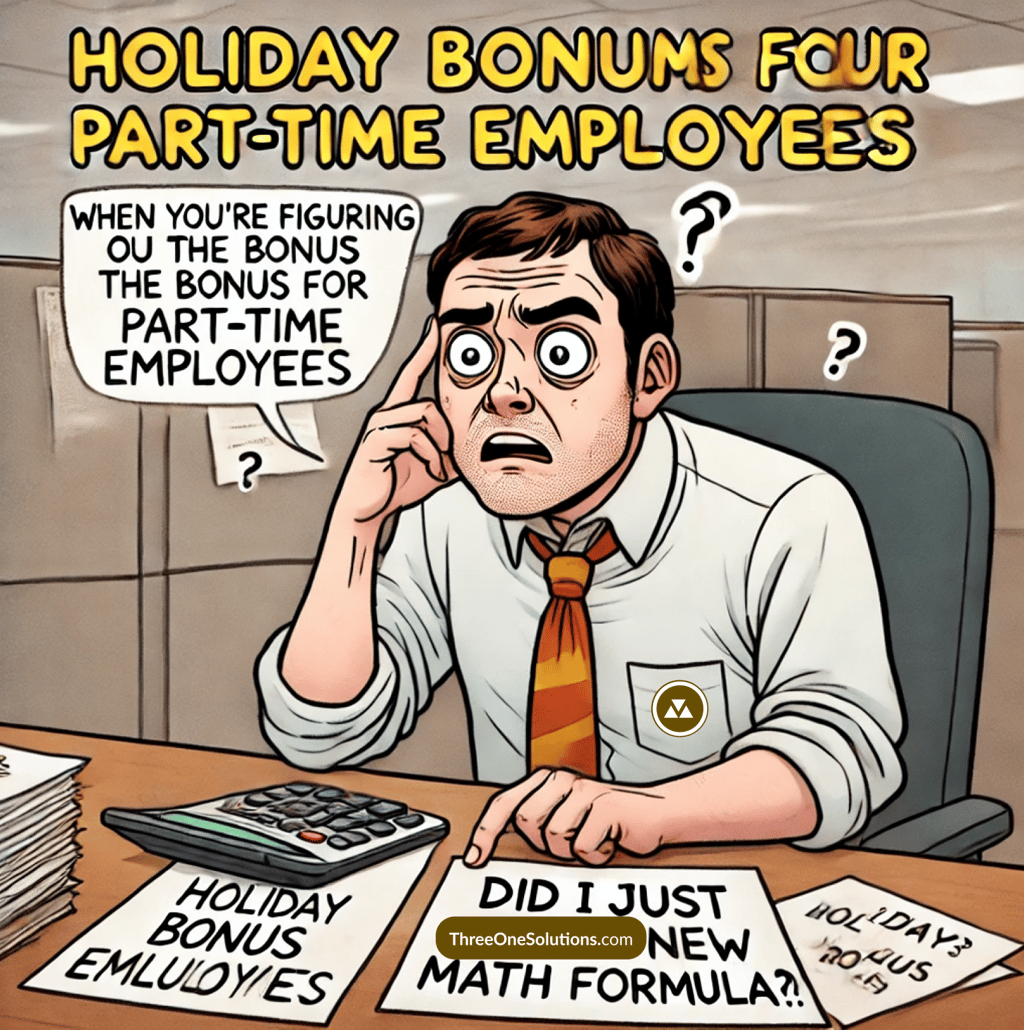What You Need to Know About Holiday Bonuses Under MIBCO
Avoid costly mistakes when calculating holiday bonuses for employees. Learn how to apply the correct rates, exemptions, and pro-rata adjustments. Stay compliant.
HUMAN RESOURCES MANAGEMENTINDUSTRY INSIGHTS
Elleck Mgiba
10/7/20245 min read


Holiday bonuses are more than just a nice-to-have benefit—they're a legal requirement for motor industry employers. Making sure you pay the right amount, at the right time, ensures you stay compliant and avoid any disputes or penalties.
What Is the Holiday Bonus?
The holiday bonus is a must for employees who qualify for paid annual leave under the Main Collective Agreement. It’s not optional, even if you want to save money or the employee doesn’t ask for it.
The agreement excludes motor vehicle salespersons, supply salespersons, and those under Additional Holiday Pay. This keeps your business compliant with the law.
Identify which employees qualify:
Eligible: Employees who qualify for paid annual leave.
Excluded: Motor vehicle salespersons, supply salespersons, and employees covered by the Additional Holiday Pay clause (e.g., Grades 7 & 8).
Chapter III Establishments: These employees get a more generous bonus—three weeks’ wages uncapped.
If you run a car dealership, only your administrative staff qualifies for the holiday bonus, not your sales team. If your business falls under Chapter III, you must pay a bonus of three weeks' wages. There is no cap.
How Much Is the Holiday Bonus?
The amount of the holiday bonus equals two weeks’ wages, but it has a cap. Here's what you need to know for the next few years:
Regular employees get two weeks' wages as their holiday bonus.
Cap the payment based on the period:
Up to August 2023: R5,756.63 maximum.
Sept 2023–Aug 2024: R6,044.46 maximum.
Sept 2024–Aug 2025: R6,346.68 maximum.
A Grade 5 administrative assistant earning R2,500 per week in 2024 has a bonus capped at R6,346.68, even though two weeks' wages equal R5,000.
Grade 5 is a category in wage scales, used by MIBCO (Motor Industry Bargaining Council). It applies to companies in the motor industry, such as:
Car dealerships
Motor repair shops
Service centers
Parts and accessory stores
and many more.
The grade system sets minimum wages and benefits based on job type, experience, skills, and responsibilities.
For businesses under Chapter III, the rules are slightly different. These businesses pay three weeks' actual wages as a holiday bonus, without any cap on the amount.
An employee earning R3,000 per week will get R9,000 (three weeks' wages, uncapped).


When Should You Pay the Bonus?
The timing of the holiday bonus is flexible, as long as the employer and employee agree. Here are the options:
After the employee completes 12 months of service
At the start of the employee’s annual leave
No later than December 20 of each year
If you cannot agree with the employee on timing, the holiday bonus is due at the end of the leave cycle. This pays the bonus on time.
Share Details with Employees
Communicate the holiday bonus details to your employees:
Share the amount and payment date.
Address any questions or concerns about employee fit and calculations.
Tip: Hold a short meeting or send an email to explain the bonus process. Make sure everyone understands it.
Adjustments for Part-Time Work (5-Step Process)
What happens if an employee doesn’t work full-time? When calculating the holiday bonus, you can make adjustments based on the employee’s attendance. If an employee does not work a full five shifts per week, you reduce the bonus.
For example, let's say the holiday bonus for the year is R6 346.68. If an employee only works three shifts per week, you need to calculate how much to reduce their bonus.
Step 1: Calculate the Number of Weeks Worked
First, determine how many weeks the employee worked in the year. If they worked 3 shifts a week for 50 weeks, that totals 150 shifts.
Step 2: Calculate the Total Shifts in a Year
Next, calculate the total number of shifts for a full-time employee. If a full-time employee works 5 shifts per week for 52 weeks, that's 260 shifts in a year.
Step 3: Determine the Adjustment Factor
Now, you find the adjustment factor. For each week the employee doesn’t work a full five shifts, reduce the holiday bonus by one-fifty-second of the total holiday bonus.
Full-time shifts: 260 shifts
Part-time shifts: 150 shifts
Total shifts not worked: 260 - 150 = 110 shifts
Step 4: Calculate the Reduction
Now you can reduce the holiday bonus. The reduction for each week not worked is calculated as follows:
Total holiday bonus: R6 346.68
Reduction per shift: R6 346.68 / 52 weeks = R121.78 per week
Total reduction: R121.78 x (110 shifts / 5 shifts per week) = R2 674.16
Step 5: Calculate the Final Bonus
Finally, subtract the total reduction from the original bonus:
Original holiday bonus: R6 346.68
Reduced amount: R2 674.16
Final holiday bonus: [ R6 346.68 - R2 674.16 = R3 672.52 ]
So, if the part-time employee worked only 150 shifts throughout the year, their holiday bonus would be R3 672.52 instead of the full amount.
This calculation method ensures you pay a fair bonus that reflects actual work while complying with MIBCO regulations. Understanding and applying these adjustments helps maintain transparency and trust between you and your employees.


Pro-Rata Holiday Bonus: When an Employee Leaves
Sometimes, an employee leaves your company before they complete a full year. In this case, you're still pay a pro-rata holiday bonus. This means the employee will get a portion of their holiday bonus based on how long they’ve worked.
If an employee leaves before qualifying for the bonus, calculate a pro-rata payment based on their time worked:
Use their service duration to determine the amount due.
Exceptions: If terminated for misconduct (with a formal hearing), they do not receive a bonus. However, if the employee later wins an unfair dismissal claim, you will owe them their pro-rata bonus.
Example: If an employee worked for six months of the year and their full bonus is R5,000, they would receive R2,500 upon departure.
Avoid Common MIBCO Compliance Pitfalls
Many companies mistakenly assume holiday bonuses are optional. This isn't the case. Failure to pay the correct bonus or misinterpret the rules can lead to costly penalties. Employers should carefully check their payroll practices to ensure they're compliant before the holiday season.
By following the MIBCO rules, employers can avoid penalties and foster a positive, loyal workforce. Keeping employees happy ensures that your business remains productive during the busy holiday period.
Holiday bonuses aren’t just a gift, they’re a legal obligation. Know the details: how much to pay, when to pay, and how to handle pro-rata bonuses. This keeps you compliant and helps you avoid mistakes. Keep your team motivated and your business safe by sticking to the rules.
BONUS: Conduct Regular Reviews
Ensure compliance with MIBCO regulations by conducting regular audits of your bonus payment processes.
Review employee eligibility, calculations, and communication methods annually to ensure everything is up to date.
As you navigate this process, consider leveraging resources from Three One Solutions. We offer online courses, personalized consultations, and in-person or virtual MIBCO compliance workshops tailored to your needs.
Whether you’re looking for full-service management solutions or just need some expert guidance, we can help.
Schedule a FREE 30-minute Strategy Session at Three One Solutions. Start now to make sure your bonus process is compliant and efficient.
We are the solution you've been looking for, not the one you've been stuck with.
MIBCO Compliance Solutions
The Company
Articles
Affiliate Program
Referral Program
MIBCO Minimum Wage 2024/2025 Update: New 3-Year Deal (2025–2028)
Three One Solutions is a Compliance Management Company for South Africa's Motor Industry. Our vision is to see SA without unhappy employers and employees in the Motor Industry. Our mission is to make life better for employers and employees in SA's Motor Industry. We give people confidence, knowledge, and solutions to stay MIBCO compliant. Want to make sure your business or the one you work for is MIBCO compliant? You're in the right place.
Copyright © 2025 EM Mgiba Investments (Pty) Ltd Registration No. 2015/256789/07 T/A Three One Solutions. All Rights Reserved. Marketing by Cleymand.com
What Customers Say
Careers
Shop Our HR Templates
Case Studies


